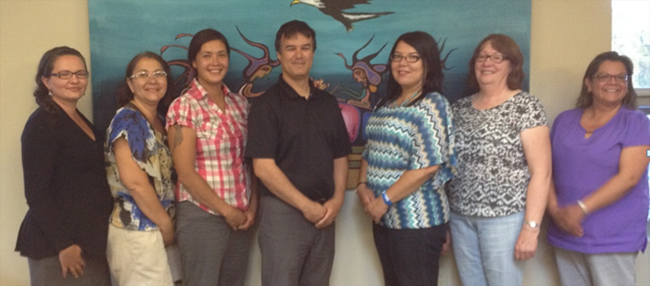More Anishinabek communities on board with their own constitutions


By Marci Becking and Faye Sabourin
M’CHIGEENG FIRST NATION – Jenny Restoule-Mallozzi says that community constitutions are made up of fundamental laws that clearly establish jurisdiction, powers, rights and governance.
“A community constitution will promote identity, good governance, empowerment, rights and freedoms,” says Restoule-Mallozzi who is legal counsel for the Union of Ontario Indians. “Communities will be able to be self-sufficient with clarity and certainty.”
The July 17 presentation was given at the Restoration of Jurisdiction Department’s constitutional development project to M’Chigeeng First Nation’s Governance Committee to help them move forward writing and ratifying their own constitution.
UOI Special Projects Coordinator, Faye Sabourin, says that the ROJ team did a presentation to the M’Chigeeng committee about governance, the five stages of constitution development and the responsibility of committee members. Successful ratifications – like in Nipissing and Wikwemikong – are great examples to follow and learn from.
M’Chigeeng First Nation is now at the stage where they will review and revise their draft constitution and start the process of community consultation.
Magnetawan First Nation’s Chief and council are also kick starting their own constitution development this summer.
Chief William Diabo says that next steps for Magnetawan include developing the communication and engagement plan for the constitution, as well as conducting in-depth community engagement.
“We would like to see the ratification of our constitution by next spring,” says Chief Diabo.
UOI legal counsel Fred Bellefeuille says that our constitutions are to be designed by us, for us. It cannot be done by others. They need to be based on community engagement with direct input from our citizens.
“If we don’t create our own constitutions, we open the door for governments to push their own laws on us,” says Bellefeuille. “Community constitutions are essential for sustainable and social development, economic success, environmental protection and human rights.”
Magnetawan’s council has identified Anthony Laforge as the community’s constitution lead. Laforge, who is the land and resource coordinator for Magnetawan, says that they had a successful community engagement with the land code and will use that experience to help them engage community members with the draft constitution.


